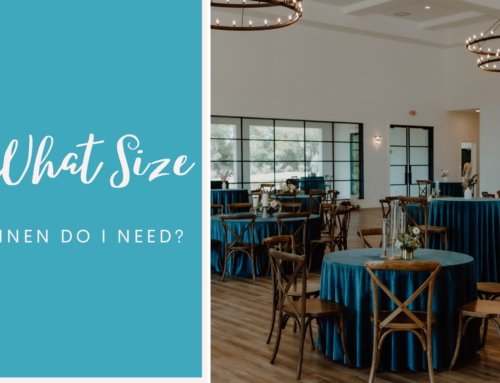Planning your wedding involves choosing the perfect style of meal service to match your vision and guest experience. Each service type has its own unique features, benefits, and challenges. Here’s a breakdown of the most popular types of wedding meal services, including buffet, plated, family-style, and stations, to help you make an informed decision.
Buffet
Formality: Low to Moderate Speed: Moderate to Slow
A buffet-style service allows guests to serve themselves from a variety of dishes set up on long tables.

Top Left: Eryn Chandler Photography | Top Right: Lisa Hause Photography | Bottom: Showfolk Photography
Pros:
- Variety: Buffets often offer multiple food options, catering to diverse tastes and dietary needs.
- Flexible Portion Sizes: Guests can choose the amount of food they want, reducing waste.
- Interactive: Encourages mingling and movement among guests.
- Cost-Effective: Typically requires fewer staff, lowering overall costs. If you’re interested in having disposable dishware, this allows you to place them at the buffet if they do not align with your design vision.
- Dishware on Tables: Flexibility in having your dishware on the tables or at the buffet. If you place the dishware on the tables, they will help to fill out the table which gives the option to make the centerpieces smaller without the table feeling empty.
Cons:
- Lines: Guests may have to wait in line, potentially causing delays.
- Less Formal: The casual nature may not suit formal weddings.
- Space Requirement: Requires ample room for buffet tables and guest movement.
- Dishware Logistics: Plates and utensils can be placed at the buffet which risks your tables looking bare or you can display them on the tables, where guests will need to carry them to and from the buffet. (When we release tables, we do remind guests to bring their plates so they don’t have to remember).
Plated Meal
Formality: High Speed: Slow (Longest serve time)
A plated meal is the most traditional and formal service style, where each guest is served a pre-selected dish at their table.

Left: T & V Photography | Top Right: Creatrix Photography | Bottom Left: Tiffany Hofeldt Photography
Pros:
- Formal Atmosphere: Offers a classic, elegant dining experience.
- Control: Ensures portion sizes and timing are consistent for all guests.
- Convenience: Guests remain seated and are served directly.
- Custom Presentation: Plates are often artfully arranged, enhancing the visual appeal.
- Guest Experience: Dinner becomes a feature point as it is executed over multiple courses. This is the longest serve time of all the serving styles.
- Control: Ensures portion sizes and timing are consistent for all guests.
- Convenience: Guests remain seated and are served directly.
- Custom Presentation: Plates are often artfully arranged, enhancing the visual appeal.
Cons:
- Higher Cost: Requires more staff for serving and plating.
- Limited Choices: Guests typically choose their meals in advance. A portion of each pre-selected option is served to them, which means if they don’t eat much of one component, like meat, they cannot compensate by taking extra sides. This setup may not be ideal for picky eaters.
- Dishware Logistics: Plates must be prepared and staged in the kitchen, so they cannot be on display at the table. If you are partial to a beautiful place setting, this will require additional cost to replace the plate with a secondary set (decorative set of plates which is picked up by catering when clearing the salad course), or renting chargers which can be pricey.
- Requires Assigned Seating: Couples need to assign both tables and specific seats for guests. Additionally, meal selections must be gathered in advance and included on place cards to assist caterers. This extra step ensures smooth service, as many guests may not remember their chosen meal from months earlier.
Family-Style
Formality: Moderate to High Speed: Fast (shortest serve time)
Family-style service involves platters of food being placed at each table for guests to share and serve themselves.

Top: Amy Dang Photography | Bottom Left + Right: Sam Hugh Photography
Pros:
- Interactive: Encourages conversation and a communal dining experience.
- Balanced Formality: Combines the elegance of plated service with the casual vibe of a buffet.
- Efficient: Reduces time spent in lines compared to buffets.
- Full Place Setting: A complete place setting at each table enhances the overall aesthetic.
- Custom Serving Sizes: Guests can customize their own portions to suit their preferences.
- Beautiful Presentation: Platters are well-designed and add a decorative element to the table.
- Cost-Effective Centerpieces: The need for space to accommodate platters allows for smaller, more affordable centerpieces.
Cons:
- Higher Cost: Requires about the same amount of staff as plated service to prepare and deliver all the platters to tables.
- Table Space: Platters and serving dishes take up significant room on tables.
- Portion Control: Guests may take uneven amounts, leading to potential shortages.
- Dishware Management: Requires additional serving utensils and coordination for clearing platters.
- Interactive: Encourages conversation and a communal dining experience.
- Balanced Formality: Combines the elegance of plated service with the casual vibe of a buffet.
- Efficient: Reduces time spent in lines or between courses compared to other serving styles.
Stations
Formality: Moderate Speed: Fast to Moderate

Top Left + Right: Carhart Photography | Bottom Left: Creatrix Photography
Pros:
- Interactive and Unique: Creates an engaging experience for guests.
- Customizable: Offers a variety of cuisines and dishes.
- Crowd Control: Distributes guests across different areas, minimizing long lines.
- Encourages Mingling: Fosters an easygoing atmosphere and pairs well with entertainment or other interactive elements.
- Flexible Seating: Allows for fewer seats than guests as movement is encouraged, which works well with a non-traditional timeline.
Cons:
- Long Lines: You must lean into the style to avoid inefficiencies, ensuring guests don’t all visit the same station simultaneously.
- Loose Timeline: Requires a flexible timeline without requiring all guests’ attention at once during the dinner service, which typically spans 1-2 hours.
- Higher Cost: Stations often feature interactive elements (e.g., a mac-and-cheese bar with numerous toppings), requiring additional setup and potentially more staff.
- Dishware Planning: Plates and utensils need to be placed at each station or tables, adding logistical complexity and removing place settings from each table.
- Interactive and Unique: Creates an engaging experience for guests.
- Customizable: Offers a variety of cuisines and dishes.
- Crowd Control: Distributes guests across different areas, minimizing long lines.
When choosing your wedding meal service style, consider your venue size, budget, guest list, and desired level of formality. Each style offers unique opportunities to make your celebration memorable and enjoyable for everyone. With careful planning, your meal service can complement your wedding’s overall vibe and ensure your guests have an unforgettable experience.




